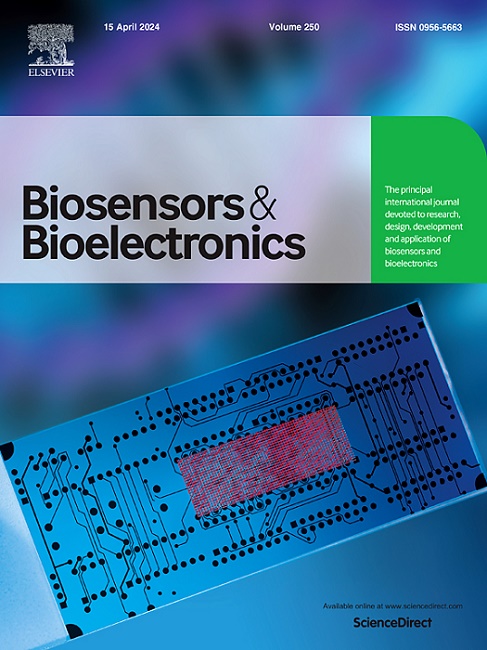Lighting up three-dimensional nanolantern for circular RNA imaging and precise gene therapy
IF 10.7
1区 生物学
Q1 BIOPHYSICS
引用次数: 0
Abstract
Circular RNAs (circRNAs) are a category of endogenous single-stranded RNAs with covalently closed head-to-tail topology, and they play a crucial part in regulating gene expression at post-transcriptional and transcriptional levels. Herein, we construct a three-dimensional nanolantern for circRNA imaging and precise gene therapy. This assay involves an integrated multi-functionalized lantern-shaped probe. By rationally engineering four vertexes and six edges of DNA dimensional architecture, the integrated nanolantern probe functions not only as a delivery machine for reactants but also as a scaffold for catalytic hybridization reactions. The presence of circCDYL initiates the entropy-driven strand displacement assembly of nanolantern monomer to generate long nanolantern concatemers while releasing small interfering RNAs (siRNAs) for target-stimulated on-site and on-demand gene therapy. Compared with canonical linear probe-based catalytic circuit, this method exhibits significantly improved fluorescence stability and gene therapy efficiency due to the inherent resistance of DNA rigid structure to enzymic digestion. This strategy enables one-step detection of circCDYL with a limit of detection (LOD) of 28.2 aM, and accurate quantification of circCDYL expressions in breast cancer patients and healthy individuals. Importantly, this catalytic circuit can achieve tumor-specific gene silencing with minimal off-target toxicity, holding great potential in tumor diagnosis and precise medicine.
求助全文
约1分钟内获得全文
求助全文
来源期刊

Biosensors and Bioelectronics
工程技术-电化学
CiteScore
20.80
自引率
7.10%
发文量
1006
审稿时长
29 days
期刊介绍:
Biosensors & Bioelectronics, along with its open access companion journal Biosensors & Bioelectronics: X, is the leading international publication in the field of biosensors and bioelectronics. It covers research, design, development, and application of biosensors, which are analytical devices incorporating biological materials with physicochemical transducers. These devices, including sensors, DNA chips, electronic noses, and lab-on-a-chip, produce digital signals proportional to specific analytes. Examples include immunosensors and enzyme-based biosensors, applied in various fields such as medicine, environmental monitoring, and food industry. The journal also focuses on molecular and supramolecular structures for enhancing device performance.
 求助内容:
求助内容: 应助结果提醒方式:
应助结果提醒方式:


